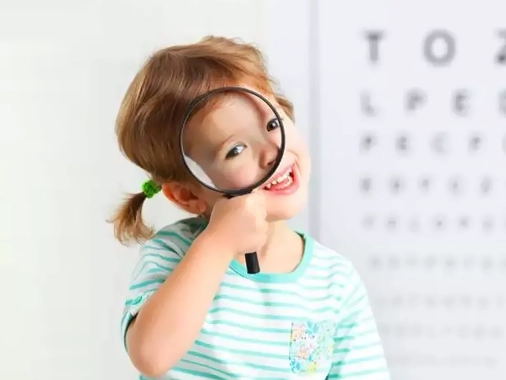
Lazy eye, medically known as amblyopia, is a vision problem in which one or both eyes have reduced visual acuity compared to normal. This condition usually develops during childhood and, if left untreated, can become permanent.
In cases of significant hyperopia (farsightedness) or astigmatism, one eye may see objects very blurry, causing the brain to ignore the blurred image. As a result, the child never learns to see clearly with that eye, leading to amblyopia. Lazy eye can also occur when there is a significant difference in prescription between the two eyes.
Treatment of lazy eye should ideally be completed by the age of 9–10 years. Therefore, children should have an eye exam by 2–3 years of age at the latest. If there is a family history of strabismus (eye misalignment),hyperopia, astigmatism, or high myopia, children should be closely monitored.
Eye exams before starting school can help prevent learning difficulties caused by undiagnosed vision problems.
Lazy eye (amblyopia) generally develops in childhood because the visual system is still maturing, and the brain is more adaptable during this period. Major factors causing lazy eye include:
Visual Coordination Problems: When the two eyes cannot work together properly, the brain may suppress the image from one eye and favor the other. This can happen if one eye has a different prescription or an eye has astigmatism or other visual problems.
Eye Closure or Drooping: Constantly closed eyes or an eye that closes when glasses are not worn can block light from entering, impairing vision development.
Blurred Vision or High Prescription: If one eye sees blurry images or has high myopia, hyperopia, or astigmatism, the brain may ignore the image from that eye and rely on the other.
Eyelid Problems: Abnormalities or muscle issues in the eyelids can contribute to lazy eye.
Lack of Early Detection or Inadequate Treatment: Without early intervention and consistent treatment, vision problems can become permanent.
If your child shows these signs, they may have a vision problem.
Treatment for lazy eye (amblyopia) is generally most effective during childhood, while the visual system is still developing. The treatment approach depends on the underlying cause and the child’s age. Common treatment methods include:
If untreated, amblyopia can lead to permanent vision impairment. Regular eye exams and early treatment are crucial for children. While treatment is most effective during childhood, some improvement may still be possible in adults.